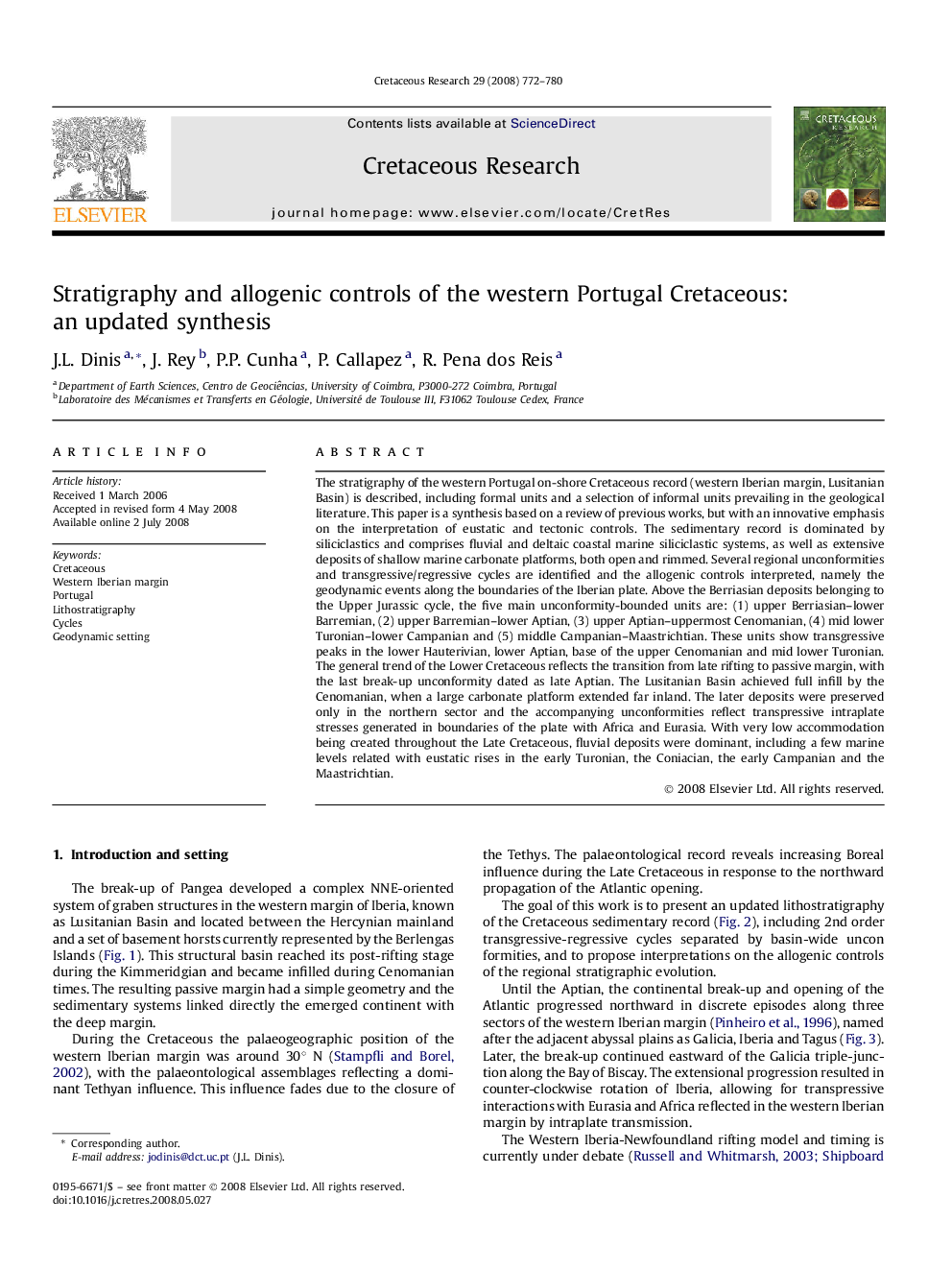| کد مقاله | کد نشریه | سال انتشار | مقاله انگلیسی | نسخه تمام متن |
|---|---|---|---|---|
| 4747693 | 1642090 | 2008 | 9 صفحه PDF | دانلود رایگان |
عنوان انگلیسی مقاله ISI
Stratigraphy and allogenic controls of the western Portugal Cretaceous: an updated synthesis
دانلود مقاله + سفارش ترجمه
دانلود مقاله ISI انگلیسی
رایگان برای ایرانیان
کلمات کلیدی
موضوعات مرتبط
مهندسی و علوم پایه
علوم زمین و سیارات
فسیل شناسی
پیش نمایش صفحه اول مقاله

چکیده انگلیسی
The stratigraphy of the western Portugal on-shore Cretaceous record (western Iberian margin, Lusitanian Basin) is described, including formal units and a selection of informal units prevailing in the geological literature. This paper is a synthesis based on a review of previous works, but with an innovative emphasis on the interpretation of eustatic and tectonic controls. The sedimentary record is dominated by siliciclastics and comprises fluvial and deltaic coastal marine siliciclastic systems, as well as extensive deposits of shallow marine carbonate platforms, both open and rimmed. Several regional unconformities and transgressive/regressive cycles are identified and the allogenic controls interpreted, namely the geodynamic events along the boundaries of the Iberian plate. Above the Berriasian deposits belonging to the Upper Jurassic cycle, the five main unconformity-bounded units are: (1) upper Berriasian-lower Barremian, (2) upper Barremian-lower Aptian, (3) upper Aptian-uppermost Cenomanian, (4) mid lower Turonian-lower Campanian and (5) middle Campanian-Maastrichtian. These units show transgressive peaks in the lower Hauterivian, lower Aptian, base of the upper Cenomanian and mid lower Turonian. The general trend of the Lower Cretaceous reflects the transition from late rifting to passive margin, with the last break-up unconformity dated as late Aptian. The Lusitanian Basin achieved full infill by the Cenomanian, when a large carbonate platform extended far inland. The later deposits were preserved only in the northern sector and the accompanying unconformities reflect transpressive intraplate stresses generated in boundaries of the plate with Africa and Eurasia. With very low accommodation being created throughout the Late Cretaceous, fluvial deposits were dominant, including a few marine levels related with eustatic rises in the early Turonian, the Coniacian, the early Campanian and the Maastrichtian.
ناشر
Database: Elsevier - ScienceDirect (ساینس دایرکت)
Journal: Cretaceous Research - Volume 29, Issues 5â6, OctoberâDecember 2008, Pages 772-780
Journal: Cretaceous Research - Volume 29, Issues 5â6, OctoberâDecember 2008, Pages 772-780
نویسندگان
J.L. Dinis, J. Rey, P.P. Cunha, P. Callapez, R. Pena dos Reis,